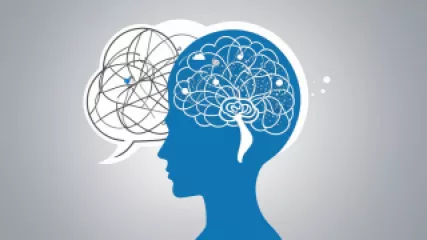Mastering Cognitive Biases in Decision-Making
Mastering Cognitive Biases in Decision-Making: A Step-by-Step Guide
In the complex and often unpredictable landscape of decision-making, navigating the treacherous waters of cognitive biases can be a daunting challenge. However, with the right strategies and a deeper understanding of how our minds work, we can overcome these inherent biases and make more rational, informed decisions. In this comprehensive guide, we'll explore the psychology of decision-making, delve into the various cognitive biases that can shape our choices, and equip you with practical tools to master the art of rational decision-making.
Understanding Cognitive Biases
Cognitive biases are the systematic errors in our thinking that lead us to make suboptimal decisions, often without even realizing it. These biases are the result of our brain's natural tendency to take mental shortcuts, relying on heuristics and intuitions rather than deliberate, analytical reasoning. By recognizing and understanding these biases, we can become more aware of how they influence our decision-making processes, enabling us to make more informed and rational choices.
Common Cognitive Biases in Decision-Making
Let's explore some of the most prevalent cognitive biases that can impact our decision-making:
Anchoring Bias
This bias occurs when we rely too heavily on the first piece of information we receive, often using it as a reference point for subsequent decisions. For example, if we're considering the price of a product, the initial price we see can heavily influence how we perceive the value of that product, even if it's not an accurate representation.
Confirmation Bias
Confirmation bias is the tendency to seek out and prioritize information that aligns with our existing beliefs and preconceptions, while ignoring or discounting information that contradicts them. This can lead us to make decisions based on limited or biased information, rather than considering the full scope of available evidence.
Framing Effect
The way a decision is presented or "framed" can significantly impact our perception of the options and the choices we make. For instance, the same outcome may be perceived differently if it's presented as a "gain" versus a "loss," even though the underlying situation is the same.
Sunk Cost Fallacy
The sunk cost fallacy is the tendency to continue investing resources (time, money, or effort) into a decision or course of action based on the amount already invested, rather than on the potential future benefits. This can lead us to make suboptimal decisions in an attempt to justify our previous investments.
Availability Heuristic
The availability heuristic is the tendency to rely on information or examples that are readily available in our memory, rather than seeking out a more comprehensive understanding of the situation. This can cause us to make decisions based on the most salient or memorable information, rather than the most relevant or accurate.
Strategies for Overcoming Cognitive Biases
Now that we've explored some of the common cognitive biases that can influence our decision-making, let's delve into practical strategies for overcoming these biases and making more rational, informed decisions:
Cultivate Mindfulness and Self-Awareness
The first step in mastering cognitive biases is to become more aware of our own thought processes and the biases that may be influencing our decisions. This involves developing a heightened sense of mindfulness, where we actively observe our thought patterns and the factors that shape our decision-making. By cultivating self-awareness, we can recognize when cognitive biases are at play and take steps to mitigate their impact.
Seek Diverse Perspectives
One of the most effective ways to overcome cognitive biases is to actively seek out diverse perspectives and challenge our own assumptions. This can involve consulting with experts, seeking out alternative viewpoints, and engaging in open and constructive dialogue with individuals who may have different experiences, backgrounds, or beliefs. By exposing ourselves to a wider range of information and perspectives, we can better identify and overcome our own biases.
Employ Debiasing Techniques
Researchers have developed a variety of debiasing techniques that can help us overcome specific cognitive biases. For example, to counter the anchoring bias, we can consciously consider alternative reference points or "anchor" our decision-making on more relevant information. To address confirmation bias, we can actively seek out contradictory evidence and challenge our own beliefs and assumptions.
Leverage Decision-Making Tools and Frameworks
There are numerous decision-making tools and frameworks that can help us make more rational, informed choices. These include decision matrices, cost-benefit analyses, and multi-criteria decision-making models. By employing these structured approaches, we can minimize the impact of cognitive biases and ensure that our decisions are based on a more comprehensive and objective evaluation of the available information.
Embrace Uncertainty and Remain Flexible
In the face of complex and rapidly changing situations, it's important to acknowledge the inherent uncertainty involved in decision-making. By embracing this uncertainty and maintaining a flexible, adaptive mindset, we can avoid the trap of overconfidence and remain open to new information and alternative perspectives. This agility can help us navigate the ever-evolving landscape of decision-making more effectively.
Putting It All Together: A Step-by-Step Guide to Mastering Cognitive Biases
Now that we've explored the foundations of cognitive biases and the strategies for overcoming them, let's dive into a step-by-step guide to help you master the art of rational decision-making:
Step 1: Recognize Your Biases
The first step is to become more aware of the cognitive biases that may be influencing your decision-making. Take the time to reflect on your thought processes, the heuristics you rely on, and the emotional or intuitive factors that shape your choices. By acknowledging these biases, you'll be better equipped to address them.
Step 2: Gather Diverse Perspectives
Seek out a wide range of information and viewpoints to challenge your own assumptions and broaden your understanding of the decision at hand. Consult with experts, read diverse sources, and engage in discussions with individuals who may have different experiences or backgrounds. This will help you identify and overcome the limitations of your own perspective.
Step 3: Employ Debiasing Techniques
Implement specific debiasing techniques to address the cognitive biases you've identified. For example, if you're susceptible to the anchoring bias, consciously consider alternative reference points or "anchor" your decision-making on more relevant information. If you're prone to confirmation bias, actively seek out contradictory evidence and challenge your own beliefs and assumptions.
Step 4: Leverage Decision-Making Tools and Frameworks
Utilize decision-making tools and frameworks to structure your decision-making process and minimize the impact of cognitive biases. This may involve the use of decision matrices, cost-benefit analyses, or multi-criteria decision-making models. These structured approaches can help you evaluate the available information more objectively and make more informed choices.
Step 5: Embrace Uncertainty and Remain Flexible
Acknowledge the inherent uncertainty involved in decision-making and maintain a flexible, adaptive mindset. Be open to new information, alternative perspectives, and changing circumstances, and be willing to adjust your decisions accordingly. This agility will help you navigate the complex and ever-evolving landscape of decision-making more effectively.
Step 6: Practice and Reflect
Mastering the art of rational decision-making is an ongoing process, and it requires consistent practice and reflection. Continually review the decisions you've made, assess their outcomes, and identify areas for improvement. By learning from your experiences and continuously refining your approach, you'll become more adept at navigating the complexities of decision-making and overcoming the influence of cognitive biases.
Conclusion
In the dynamic and ever-changing world we live in, the ability to make rational, informed decisions is a critical skill. By understanding the influence of cognitive biases and employing the strategies outlined in this guide, you can develop the mindset and tools necessary to overcome these biases and make more effective decisions. Remember, the journey to mastering cognitive biases is an ongoing one, but with practice and a commitment to self-improvement, you can become a more rational, intuitive, and successful decision-maker.
Remember, the key to mastering cognitive biases in decision-making is to remain vigilant, employ proven strategies, and continuously refine your approach. By doing so, you'll not only make better decisions but also gain a deeper understanding of the psychology that shapes our choices. Embrace the challenge, trust the process, and embark on your journey to becoming a more rational, intuitive, and successful decision-maker.






